Why Mexican Tortas Are Mexico’s Ultimate Street Food Sandwich
Mexican tortas are massive, messy, and absolutely delicious sandwiches that represent the heart of Mexico’s street food culture. These aren’t your typical deli sandwiches – they’re towering creations packed with layers of meat, beans, avocado, pickled jalapeños, and fresh vegetables, all stuffed into soft Mexican bread.
What makes Mexican tortas special:
- Traditional bread: Made with telera or bolillo rolls (inspired by French baguettes)
- Endless fillings: From ham and milanesa to carnitas and barbacoa
- Street food heritage: Invented in 1892 by 11-year-old Armando Martínez Centurión in Mexico City
- Regional varieties: Tortas ahogadas (drowned in sauce), cemitas, pambazos, and guajolotas
- Portable perfection: Designed to be eaten on-the-go without falling apart
As one food writer perfectly captured it: “A Mexican torta is gloriously messy, ridiculously large and very exciting to eat.” These sandwiches became the go-to lunch for workers and students in late 19th-century Mexico City, and they’ve remained a beloved street food staple ever since.
Whether you’re craving a simple torta de jamón (ham torta) or an elaborate torta cubana loaded with multiple meats, these sandwiches offer an authentic taste of Mexican culinary culture. From the busy streets of Mexico City to food trucks worldwide, tortas have evolved while maintaining their essential character – a hearty, satisfying meal that brings together the best of Mexican flavors in one incredible sandwich.
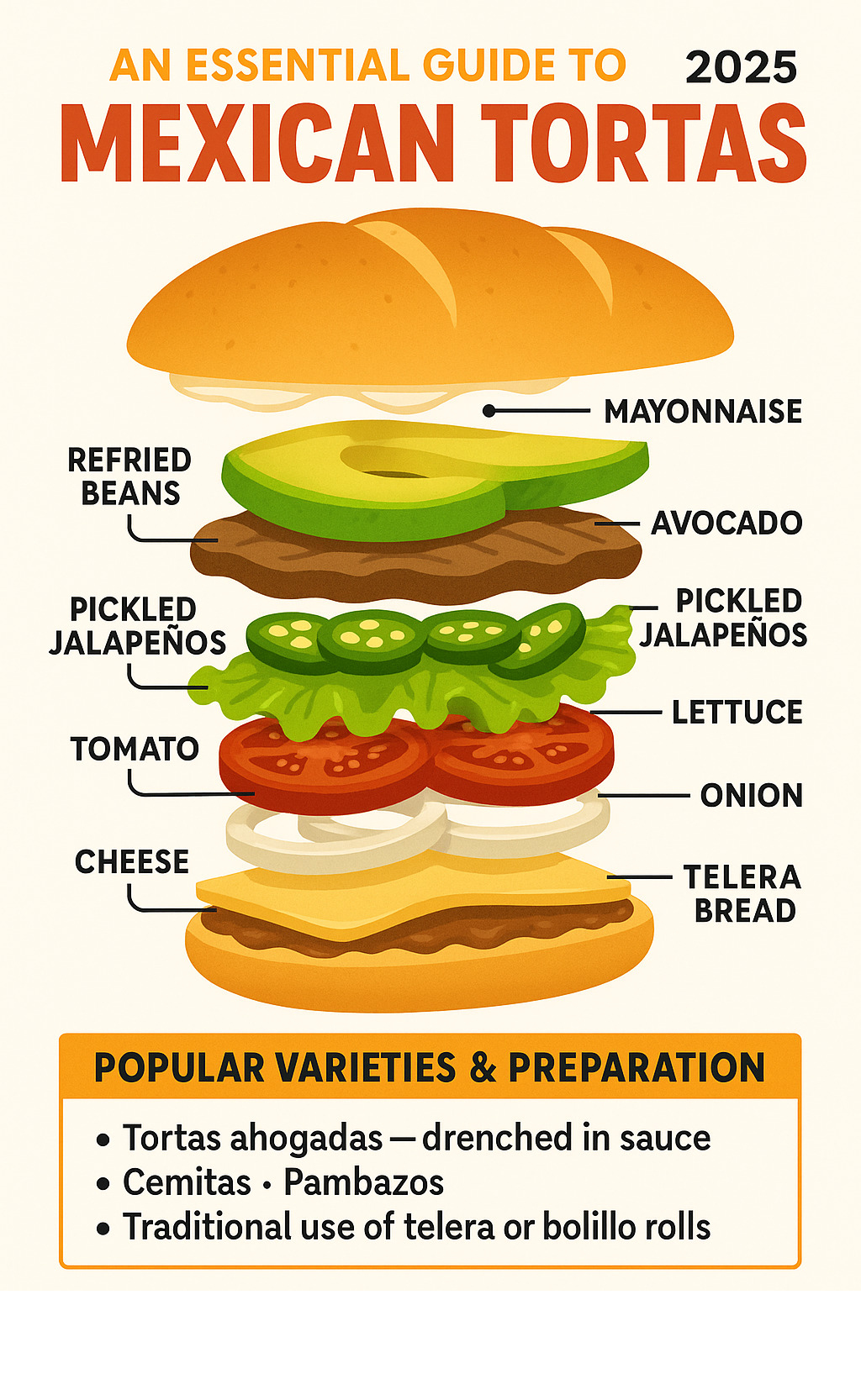
Mexican tortas basics:
A Brief History & Evolution
The fascinating story of Mexican tortas starts with an unexpected cultural mashup that would change Mexico’s food scene forever. When French forces occupied Mexico in the 1860s, they brought more than just political influence – they introduced baking techniques that would revolutionize Mexican bread-making.
French bakers taught locals how to create the telera and bolillo breads that became the backbone of torta culture. These weren’t just any breads – they had the perfect balance of soft interior and sturdy crust that could handle Mexico’s bold, juicy fillings without falling apart. The word “torta” itself traces back to Late Latin “torta panis,” meaning “twisted bread,” showing just how deep these culinary roots run.
But here’s where the story gets really interesting. In 1892, an 11-year-old entrepreneur named Armando Martínez Centurión created the first official torta in Mexico City. This wasn’t just child’s play – young Armando later opened Tortería Armando on Callejón del Espíritu Santo, and amazingly, it’s still serving hungry customers in the Centro Histórico today.
What started as one clever kid’s solution to feed busy workers and students quickly exploded into a full-blown culinary movement. According to scientific research on torta origins, these sandwiches emerged as the perfect street food – portable, filling, and designed for Mexico’s growing urban workforce.
Early Street-Food Boom
The Porfiriato era (1876-1911) was Mexico City’s time to shine. The capital was modernizing fast, and with all that growth came hungry workers who needed quick, affordable meals they could grab and go. Students at the city’s expanding schools faced the same challenge – they needed something hearty that wouldn’t break the bank.
Mexican tortas were the perfect answer. They were substantial enough to fuel construction workers through long days, cheap enough for students’ tight budgets, and fast enough to prepare at the growing number of street-side torterías popping up around the city.
The genius was in the design. While fancy European sandwiches might crumble under pressure, tortas were built tough for city life. The soft bread interior soaked up all those delicious meat and vegetable juices without turning to mush, while the slightly crusty exterior kept everything together during the daily urban hustle.
From Lonche to Guajolota
As Mexican tortas spread across the country, different regions put their own spin on this beloved sandwich, often giving them completely new names. Up in Northern Mexico, especially around Guadalajara, people started calling them “lonches” – a fun twist on the English word “lunch” that shows how cultures blend at the border.
But the most wonderfully weird regional variation has to be the guajolota, beloved in Hidalgo and Mexico City. Picture this: someone takes an entire tamale and stuffs it inside a telera roll. Yes, it’s carbs on carbs, and sometimes they even add a crispy enchilada for good measure.
It might sound over-the-top, but locals absolutely love this combination. The guajolota perfectly captures Mexico’s fearless approach to layering flavors and textures – because why have one delicious thing when you can have three delicious things together?
Bread & Building Blocks of the Perfect Torta
The secret to exceptional Mexican tortas starts with choosing the right bread. Think of it as the foundation of a house – get this wrong, and everything else falls apart (literally!).
Telera rolls are the gold standard for torta construction. These round, soft rolls have a slightly dense crumb that works like a sponge, soaking up all those delicious juices without turning into mush. The texture is perfect for cold tortas, maintaining its structural integrity even when you pile on layer after layer of fillings. Most street vendors swear by telera because it simply doesn’t quit on you.
Bolillo offers a different approach with its football shape and slightly crustier exterior. This makes it the champion of hot tortas – you can toast it to create that perfect contrast between crispy outside and pillowy inside. In some regions, when you order a torta made with bolillo, locals might call it a “lonche” instead.
Cemita bread takes things up a notch. These larger, airier rolls often come topped with sesame seeds and are the star of Puebla’s famous cemita poblana. While technically a different sandwich, cemitas share the same DNA as tortas and deserve respect in the bread family tree.
Pambazo is the rebel of the group. This soft, absorbent bread is specifically designed to be dunked in guajillo chile sauce before filling and griddling. It’s like the bread equivalent of a fearless daredevil – ready to take on whatever sauce you throw at it.
| Bread Type | Shape | Texture | Best For | Regional Preference |
|---|---|---|---|---|
| Telera | Round | Soft, dense | Cold tortas | Central Mexico |
| Bolillo | Football | Slightly crusty | Hot tortas | Northern Mexico |
| Cemita | Round, large | Airy, light | Cemita poblana | Puebla |
| Pambazo | Round | Soft, absorbent | Sauce-dipped | Central Mexico |
Essential Spreads & Toppings
Building the perfect Mexican tortas is like conducting an orchestra – every ingredient has its moment to shine, and timing is everything. The layering technique isn’t just tradition; it’s pure engineering genius developed over more than a century of street food perfection.
Start with your moisture barriers – this is where many home cooks go wrong. Spread mayonnaise or Mexican crema on both halves of your bread first. This creates a protective shield that keeps your bread from turning soggy. Refried beans come next, serving double duty as both flavor improver and secondary moisture barrier. They’re like the bodyguards of the torta world.
Avocado gets the mashing treatment – none of this sliced avocado nonsense. Mash it up and spread it evenly across the surface. This technique ensures every bite gets that creamy richness while helping to lock other toppings in place. It’s the glue that holds your torta dreams together.
The fresh vegetable trio follows a specific hierarchy that matters more than you might think. Lettuce goes down first for crunch and freshness. Tomatoes are placed strategically (never directly against the bread) to add that bright acidity without creating a soggy mess. Thinly sliced onions provide the sharp bite that cuts through all those rich flavors and keeps things balanced.
Pickled jalapeños are absolutely non-negotiable. Their acidity brightens every single bite while delivering heat that complements rather than competes with your other flavors. Even that pickling liquid adds a subtle tang that lifts the entire experience.
Cheese selection depends on your torta’s destiny. Planning to heat it up? Go with queso Oaxaca or something that melts beautifully. Keeping it cold? Queso fresco provides that perfect texture contrast that makes each bite interesting. The key is choosing cheese that improves rather than overwhelms your carefully constructed flavor symphony.
Classic & Regional Variations of Mexican Tortas
The world of Mexican tortas is wonderfully diverse, with each region putting its own spin on this beloved sandwich. From simple classics to towering creations that challenge your jaw’s capacity, these variations tell the story of Mexico’s rich culinary landscape.
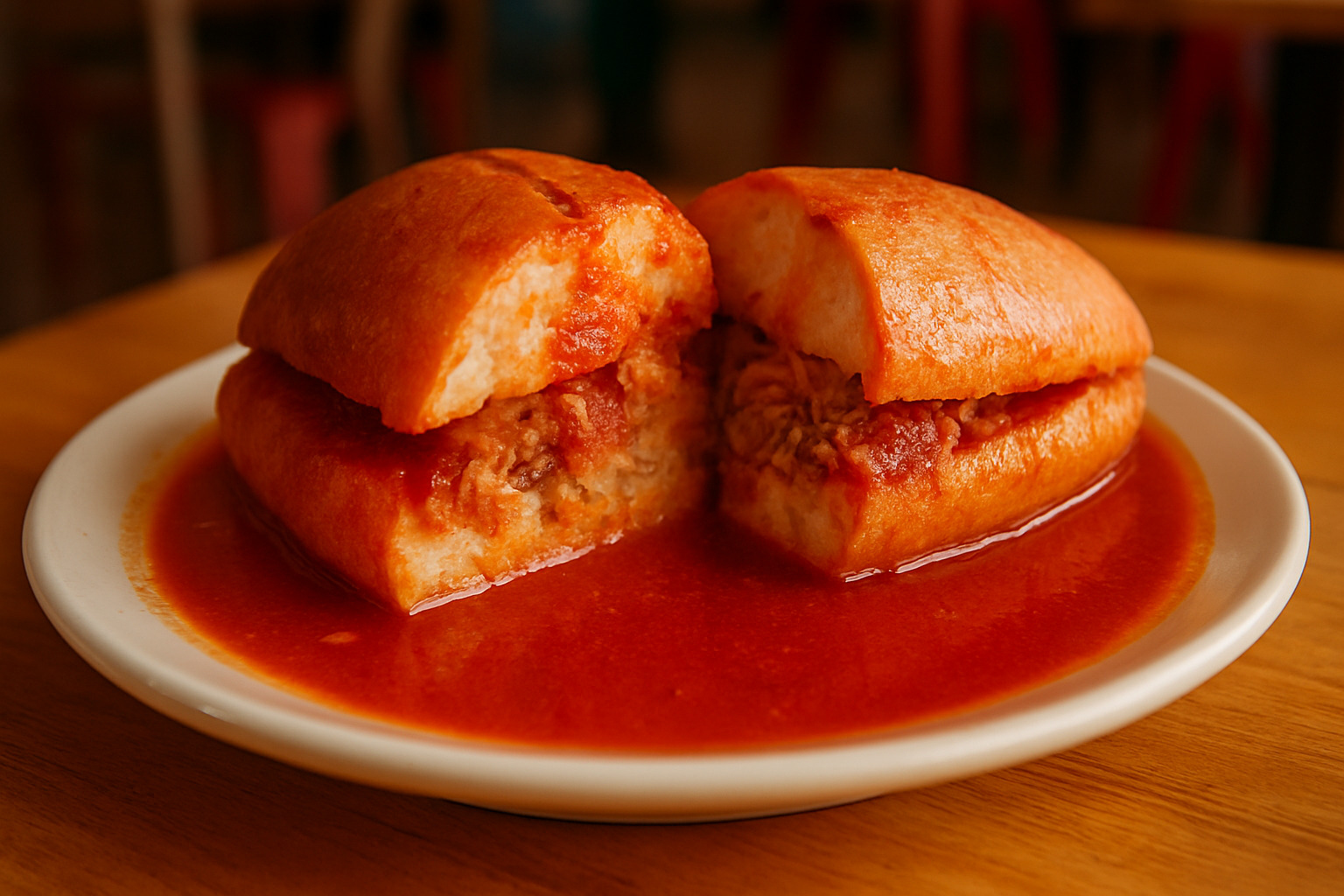
Let’s start with the torta de jamón, which holds a special place in Mexican hearts thanks to El Chavo del Ocho, the beloved TV character who made this ham and cheese combination famous. It’s beautifully simple – just quality ham, cheese, and the essential toppings we covered earlier. This is often the first torta many people try, and it perfectly captures the essence of what makes these sandwiches so special.
The torta milanesa takes things up a notch with its star ingredient: perfectly breaded and fried meat that’s been pounded thin for even cooking. Whether made with chicken or beef, the crispy coating creates an amazing contrast against the soft bread and creamy spreads. The key is getting that coating golden and crunchy while keeping the meat tender inside.
But if you really want to understand torta excess, you need to meet the torta cubana. Don’t let the name fool you – this isn’t Cuban at all. It got its name from a street in Mexico City where some creative tortería owner decided that one meat simply wasn’t enough. According to scientific research on Torta Cubana, this monster sandwich typically includes ham, milanesa, chorizo, and sometimes even hot dogs, all piled together with the usual toppings. It’s gloriously excessive and absolutely delicious.
Then there’s the torta ahogada from Guadalajara, which literally means “drowned torta.” This isn’t your typical handheld sandwich – it’s sliced and served on a plate, then completely smothered in warm tomato-based salsa. Somehow, the bread maintains just enough structure to be eaten with a fork, creating this unique experience that’s part sandwich, part soup, and completely wonderful.
The torta de la barda has a charming origin story – it was first created at a stand next to a brick wall (barda) at the entrance to Tampico harbor. This regional specialty reflects the port city’s maritime culture with ingredients and preparation methods you won’t find elsewhere.
Don’t forget about the pambazo, where the bread gets dipped in guajillo chile sauce before being filled and griddled. Or the guajolota, which boldly stuffs an entire tamale inside a torta roll – because sometimes carbs on carbs is exactly what you need.
Most Popular Mexican Tortas You Must Try
When exploring Mexican tortas, certain fillings have earned legendary status for good reason. The milanesa variety showcases Mexico’s mastery of breaded and fried proteins. Whether you choose chicken, beef, or pork, the secret is achieving that perfect balance where the coating stays crispy while the meat remains incredibly tender. The best places prepare their milanesa fresh to order, so you hear that satisfying crunch with every bite.
Carne asada tortas bring the smoky flavors of Mexican barbecue into sandwich form. The beef gets marinated in citrus and spices, then grilled to perfection and sliced thin. That char from the grill adds a smoky depth that pairs beautifully with cool, fresh toppings like avocado and lettuce.
For something truly special, seek out cochinita pibil tortas. This Yucatecan specialty features pork that’s been marinated in achiote and citrus, then slow-roasted while wrapped in banana leaves. The result is incredibly tender meat with complex, earthy flavors that transform the humble torta into something extraordinary. It’s often served with pickled red onions that add a bright, tangy contrast.
Al pastor tortas take the famous taco filling and adapt it brilliantly for sandwich form. The pork gets marinated in chiles and pineapple, creating those sweet and spicy flavors that work so well with traditional torta toppings. Some places even add a slice of grilled pineapple for extra sweetness.
Barbacoa tortas traditionally use slow-cooked lamb or goat, though beef cheek has become common in many areas. After hours of cooking, the meat becomes so tender it practically melts into the bread while maintaining those rich, complex flavors that make barbacoa so special.
Regional Mexican Tortas by State
Jalisco revolutionized the torta world with the torta ahogada, completely changing how we think about eating sandwiches. The bread must be specially selected to withstand the warm salsa without turning to mush – it’s a delicate balance that local tortería owners have perfected over generations.
Puebla specializes in cemitas, which while technically different from tortas, share that same spirit of generous filling and bold flavors. These use sesame seed-topped buns and often include ingredients like chipotle chiles and papalo, a pungent herb that’s absolutely essential to authentic cemitas.
Hidalgo gave us both pambazos and guajolotas, two wonderfully unique takes on the sandwich concept. Pambazos involve dipping the bread in red chile sauce before griddling, while guajolotas boldly stuff entire tamales inside torta bread. Yes, it’s carbs on carbs, and locals wouldn’t have it any other way.
Tamaulipas contributed the torta de la barda, which reflects the coastal region’s access to different ingredients and the unique food culture that develops in port cities where different culinary traditions meet and mingle.
Mexico City remains the birthplace and continuing innovation center for tortas. The guajolota is still popular here, and creative tortería operators constantly develop new fusion varieties that push the boundaries of what a torta can be while respecting its traditional roots.
Assembling Authentic Mexican Tortas at Home
Making Mexican tortas at home is surprisingly straightforward once you understand the fundamentals. The key is treating each component with respect and building your sandwich like the Mexican street vendors do – with intention and technique.
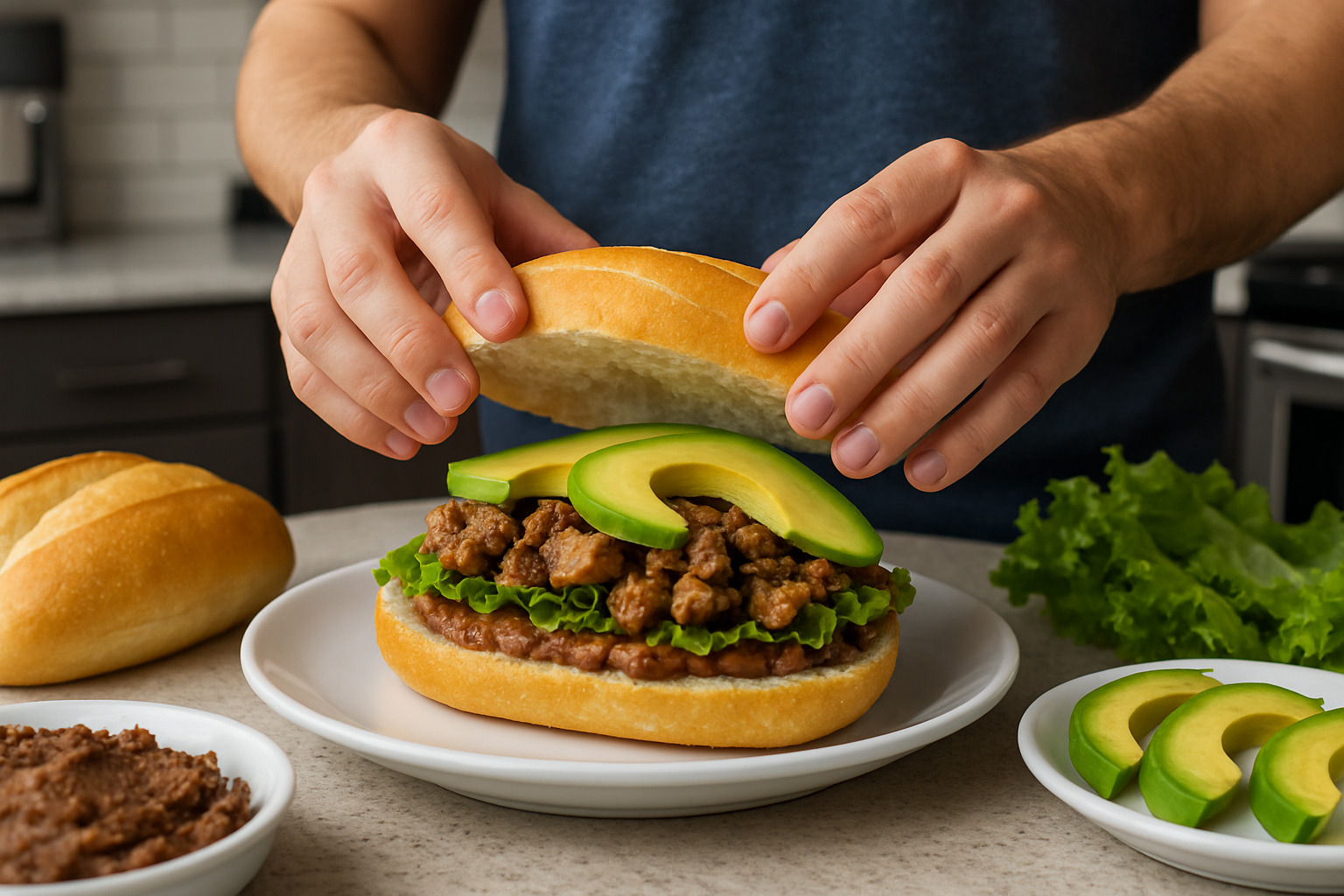
Start with proper bread preparation. Slice your telera or bolillo horizontally, but don’t cut all the way through – leave a small hinge to help hold everything together. Lightly toast the cut surfaces in a dry pan until they’re golden. This step isn’t optional – it creates the foundation that keeps your torta from turning into a soggy mess.
Building the moisture barrier comes next, and this is where many home cooks go wrong. Spread mayonnaise or Mexican crema on both cut surfaces generously. This isn’t just for flavor – it’s your first line of defense against soggy bread. Follow with a layer of refried beans on the bottom half. The beans serve double duty, adding protein and flavor while creating another protective layer.
Your protein placement matters more than you might think. If you’re using hot ingredients like freshly cooked milanesa or warm carne asada, let them cool slightly first. You want them warm, not steaming, to avoid creating condensation that will make your bread soggy. Cold proteins like ham should be well-chilled and patted dry.
Strategic layering follows a time-tested order. Mashed avocado goes directly on the protein – not sliced, but properly mashed and spread. This helps anchor your meat and adds that creamy richness that makes tortas special. Fresh lettuce provides crucial crunch, followed by tomato slices placed strategically to minimize juice contact with the bread. Thinly sliced onions and pickled jalapeños complete the vegetable layer.
Vegetarian and vegan options work beautifully in torta format. A crispy chile relleno makes an incredibly satisfying vegetarian torta, while soy chorizo scrambled with eggs creates a fantastic breakfast version. For vegan tortas, skip the mayo and cheese but double up on avocado and beans for that essential richness.
The final assembly requires a gentle but firm touch. Add your cheese if using, then carefully press the sandwich together. For the authentic street food experience, wrap three-quarters of your torta in foil or butcher paper, leaving the top exposed for eating.
For more inspiration on creative dining experiences, check out our guide to interesting places to eat.
Chef-Approved Tricks
Professional tortería operators have perfected techniques that make all the difference. The foil wrapping method is an art form – wrap from the bottom up, leaving the top quarter exposed, then twist the foil at the bottom to create a handle. This keeps your torta warm while preventing the inevitable mess.
Cheese melting requires timing. Place your cheese inside the toasted bread while it’s still warm from the pan. The residual heat will melt it perfectly without making it greasy or overwhelming.
Salsa pairing isn’t random. Meat-heavy tortas like cubanas pair beautifully with bright, acidic salsas verdes that cut through the richness. Simpler tortas can handle more complex red salsas without competing flavors.
Authentic Mexican tortas are meant to be substantial meals. Don’t feel pressured to finish an entire torta in one sitting – they’re often shared between friends or saved for later. The portions are generous because they’re designed to satisfy and sustain, just like they did for Mexican workers over a century ago.
Global Adaptations & Nutritional Insights
Mexican tortas have become global ambassadors of Mexican street food culture, traveling far beyond their homeland while maintaining their essential soul. In New York City, creative food truck operators have acceptd the torta format, introducing fusion fillings that would make even traditional tortería owners smile with approval.
The magic happens when local ingredients meet traditional techniques. Smoked brisket tortas bring Texas barbecue flavors to Mexican bread, while coastal cities experiment with coconut shrimp and grilled fish varieties. Korean-Mexican fusion has produced bulgogi tortas that somehow feel completely natural – the sweet-savory marinade works beautifully with pickled jalapeños and avocado.

What’s remarkable is how these adaptations respect the original format. Food truck operators understand that a torta’s strength lies in its construction – the careful layering, the moisture barriers, the balance of textures. They’re not just putting different ingredients in Mexican bread; they’re genuinely understanding what makes a torta work.
The nutritional profile of Mexican tortas makes them surprisingly well-balanced meals. A typical torta delivers between 376-600 calories, with about 22 grams of protein and 60 grams of carbohydrates. That’s not just empty calories – it’s a complete meal that provides sustained energy for hours.
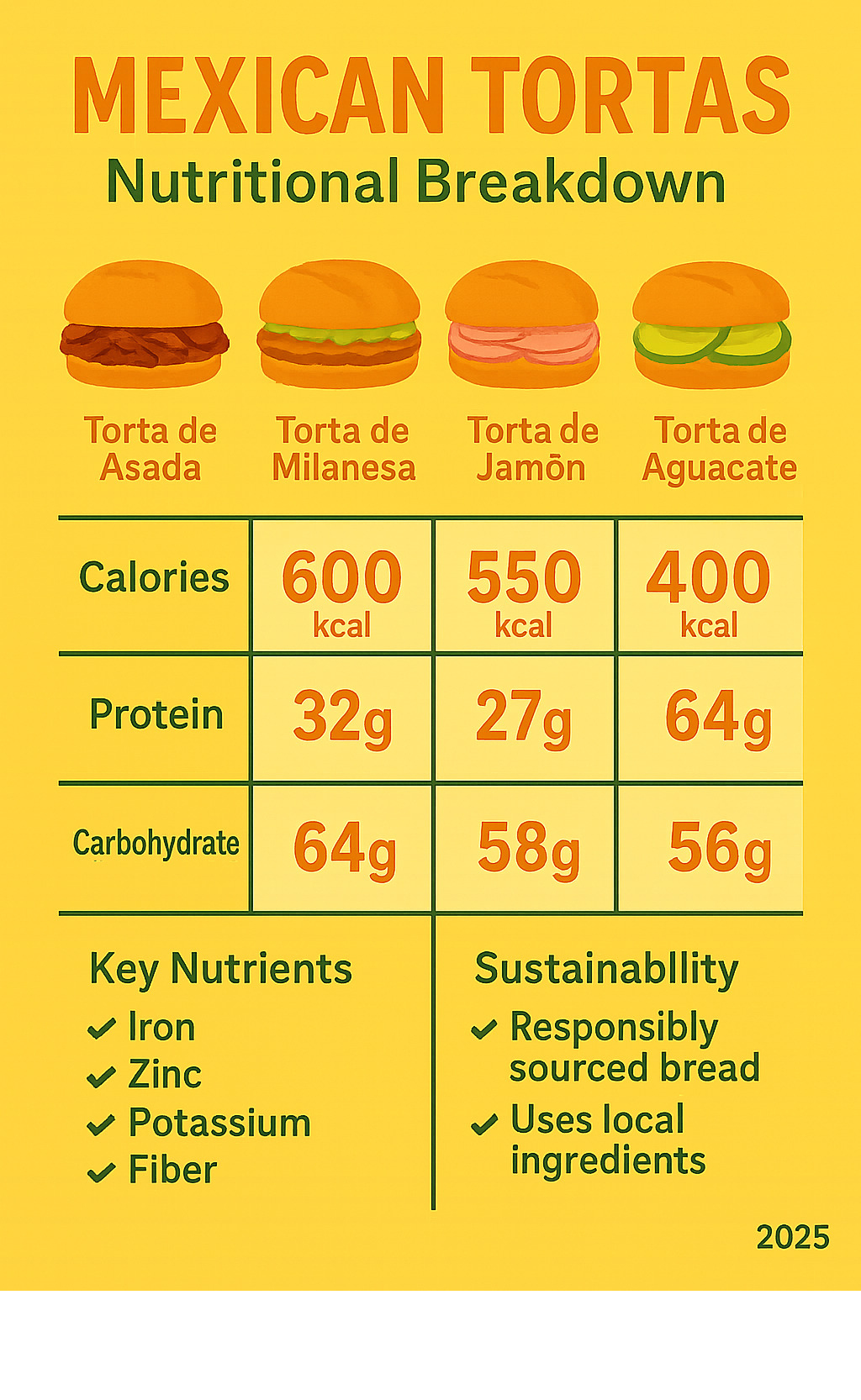
The protein comes from multiple sources – meat, beans, cheese, and even avocado contributes some. The carbohydrates from the bread provide quick energy, while the fiber from vegetables and beans helps with sustained satiation. Healthy fats from avocado and moderate amounts from cheese round out the nutritional profile.
Perhaps most importantly, tortas are designed for real life. They’re portable, they travel well, and they actually taste better after sitting for a few minutes as the flavors meld together. This makes them perfect for meal prep – you can assemble them the night before and have a complete, satisfying lunch ready to go.
Health & Sustainability Snapshot
The beauty of Mexican tortas lies in their natural balance. The combination of complex carbohydrates from bread and complete proteins from meat or beans creates lasting energy that doesn’t crash an hour later. This isn’t accidental – it’s the result of generations of street food evolution creating the perfect worker’s meal.
Plant-based proteins have found a natural home in torta culture. Traditional refried beans have always been a protein powerhouse, but modern interpretations include seasoned lentils, grilled portobello mushrooms, and even well-seasoned tofu. The key is understanding that tortas need substantial fillings – delicate ingredients get lost in the bold flavors and hearty bread.
Understanding portion sizes helps appreciate tortas properly. These aren’t oversized sandwiches – they’re complete meals designed to satisfy hunger for hours. When you order a torta, you’re getting lunch and probably a snack for later too.
The sustainability aspect of torta culture is quietly impressive. Traditional torterías source bread from local panaderías, use seasonal vegetables, and operate with minimal waste. The format itself is sustainable – it uses every part of the ingredients efficiently and creates minimal packaging waste when wrapped in simple paper or foil.
This approach to food – substantial, balanced, and designed for real people living real lives – explains why Mexican tortas continue to thrive in an increasingly health-conscious world. They’re not trying to be diet food; they’re trying to be good food that happens to be nutritionally complete.
Frequently Asked Questions about Mexican Tortas
What makes mexican tortas different from other Mexican sandwiches?
The magic of Mexican tortas lies in their unique identity that sets them apart from their sandwich cousins. While you might encounter cemitas with their sesame-topped buns or pambazos dipped in chile sauce, tortas have their own special character that’s unmistakable.
The bread makes all the difference. Telera and bolillo rolls aren’t just containers for fillings – they’re active participants in the flavor experience. These soft Mexican breads are designed to absorb juices and flavors while maintaining their structure, creating a harmony between bread and filling that you won’t find in other sandwiches.
Traditional tortas follow a specific layering methodology that’s been perfected over more than a century. The strategic placement of refried beans, mashed avocado, and pickled jalapeños isn’t random – it’s engineered to create the perfect bite every time. This systematic approach differs from the more freestyle assembly of other Mexican sandwiches.
Perhaps most importantly, Mexican tortas carry deep cultural significance as the ultimate street food. They were specifically created to feed Mexico City’s growing workforce in the 1890s, and that portable, satisfying character remains central to their identity. While other sandwiches might be regional specialties, tortas represent Mexico’s street food culture nationwide.
Are there authentic vegetarian or vegan Mexican tortas?
Here’s some great news for plant-based food lovers – authentic vegetarian Mexican tortas aren’t modern inventions, they’re traditional preparations that have existed for generations!
Chile relleno tortas represent one of the most beloved vegetarian options. These feature poblano peppers stuffed with cheese, battered, and fried until golden. The creamy, slightly spicy pepper paired with traditional torta toppings creates a deeply satisfying meal that even meat-lovers crave.
Tortas de frijoles showcase seasoned refried beans as the star ingredient. Don’t underestimate these – when beans are properly seasoned and combined with mashed avocado, pickled jalapeños, and fresh vegetables, they create incredibly flavorful sandwiches that demonstrate why beans are such an important protein source in Mexican cuisine.
For breakfast lovers, tortas de huevo (egg tortas) are completely traditional, often featuring scrambled eggs with onions and chiles. Modern adaptations using soy chorizo maintain authenticity while accommodating vegan diets, since the seasonings and preparation methods remain unchanged.
Vegan Mexican tortas work beautifully when you focus on traditional vegetables and skip the dairy. The combination of beans, avocado, and vegetables provides plenty of richness and flavor, proving that these sandwiches were naturally plant-forward long before it became trendy.
How do tortas ahogadas stay crispy under all that salsa?
This question always makes us smile because it reveals a delicious misunderstanding about tortas ahogadas. The truth is, they don’t stay crispy – and that’s exactly the point!
The genius of Guadalajara’s famous “drowned tortas” lies in their change from sandwich to something entirely different. The bread is carefully selected for its ability to absorb the warm, flavorful salsa while maintaining just enough structure to be eaten with a fork. It’s like watching a magic trick where a sandwich becomes a hybrid soup-sandwich experience.
The bread becomes tender and infused with salsa flavors, creating a unique texture that’s neither fully liquid nor solid. This isn’t a design flaw – it’s the intended experience that locals have perfected over decades. The torta ahogada represents a completely different eating experience from regular tortas.
Timing is everything with these beauties. They’re served immediately after the salsa is applied, and diners eat them quickly while the bread still has some integrity. This is why you’ll always see tortas ahogadas served on plates rather than wrapped in foil like their portable cousins.
The real skill lies in choosing the right bread and salsa consistency. Too thin, and you get soup with bread chunks. Too thick, and the bread doesn’t absorb properly. When done right, it’s a revelation that shows how creative Mexican cooks can transform familiar ingredients into something completely new.
Conclusion
There’s something magical about taking that first bite of a perfectly assembled Mexican torta. The soft bread gives way to layers of flavor that tell the story of more than a century of Mexican culinary tradition. These aren’t just oversized sandwiches – they’re edible time capsules that connect us to the busy streets of 1890s Mexico City, where young Armando Martínez Centurión first created his masterpiece.
What makes Mexican tortas truly special is how they’ve managed to stay authentic while embracing change. Whether you’re enjoying a classic torta de jamón that would make El Chavo del Ocho proud, or diving into a monster torta cubana that requires both hands and serious commitment, you’re participating in a food tradition that has fed generations of Mexican workers, students, and adventurous eaters.
The genius of tortas lies in their democratic spirit. They’re simultaneously simple enough for a quick lunch and sophisticated enough to showcase complex regional flavors. A torta ahogada from Guadalajara offers a completely different experience than a cemita poblana, yet both carry the same DNA of Mexican street food creativity.
In our modern world of food trucks and fusion cuisine, tortas have proven their staying power. From the streets of Mexico City to food trucks in New York City, they’ve adapted without losing their soul. The basic formula remains unchanged: good bread, quality fillings, proper layering, and that essential Mexican touch that transforms ingredients into something greater than the sum of their parts.
For food lovers seeking authentic experiences, exploring different torta varieties is like taking a delicious tour through Mexico’s diverse regions. Each bite offers insights into local ingredients, cultural preferences, and the creativity that emerges when tradition meets innovation.
The beauty of Mexican tortas extends beyond taste to their role in bringing people together. They’re conversation starters, cultural bridges, and proof that the best food often comes from the streets rather than fancy kitchens. In a world that sometimes feels disconnected, sharing a torta reminds us of food’s power to create community.
Ready to find more authentic street food trips? Our comprehensive street food tours guide will help you find the best places to experience tortas and other incredible Mexican specialties wherever your travels take you.
At The Dining Destination, we believe every meal tells a story. From our home base in New York City to destinations around the world, we’re here to help you find the stories behind the dishes that bring cultures together. Whether you’re planning your next food trip or simply want to understand the traditions that make each bite meaningful, we’re your guide to the world’s most delicious experiences.

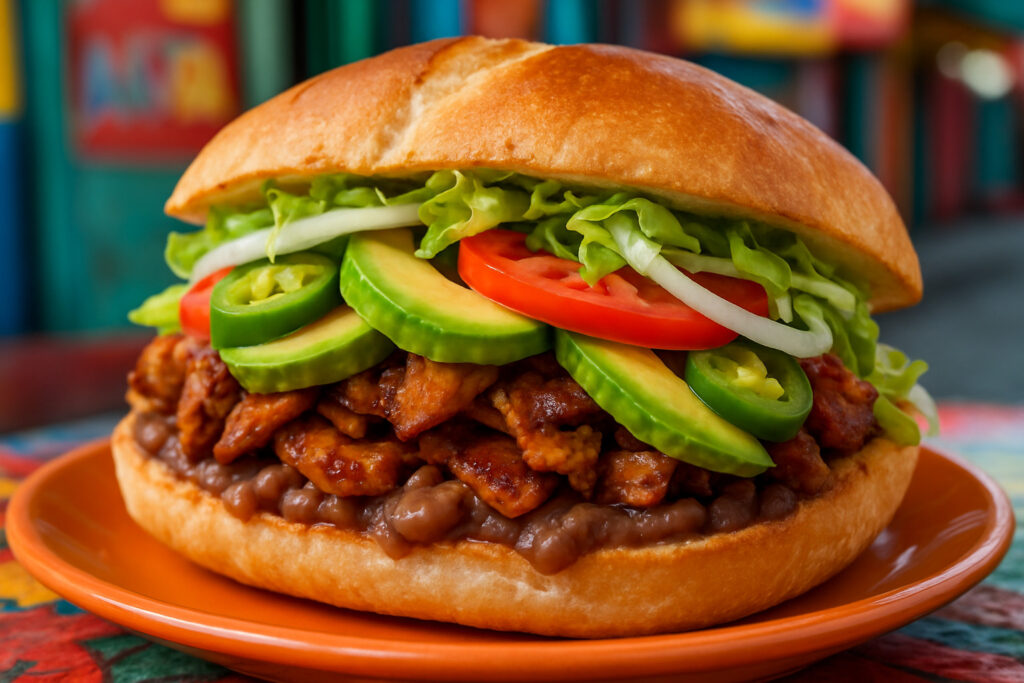

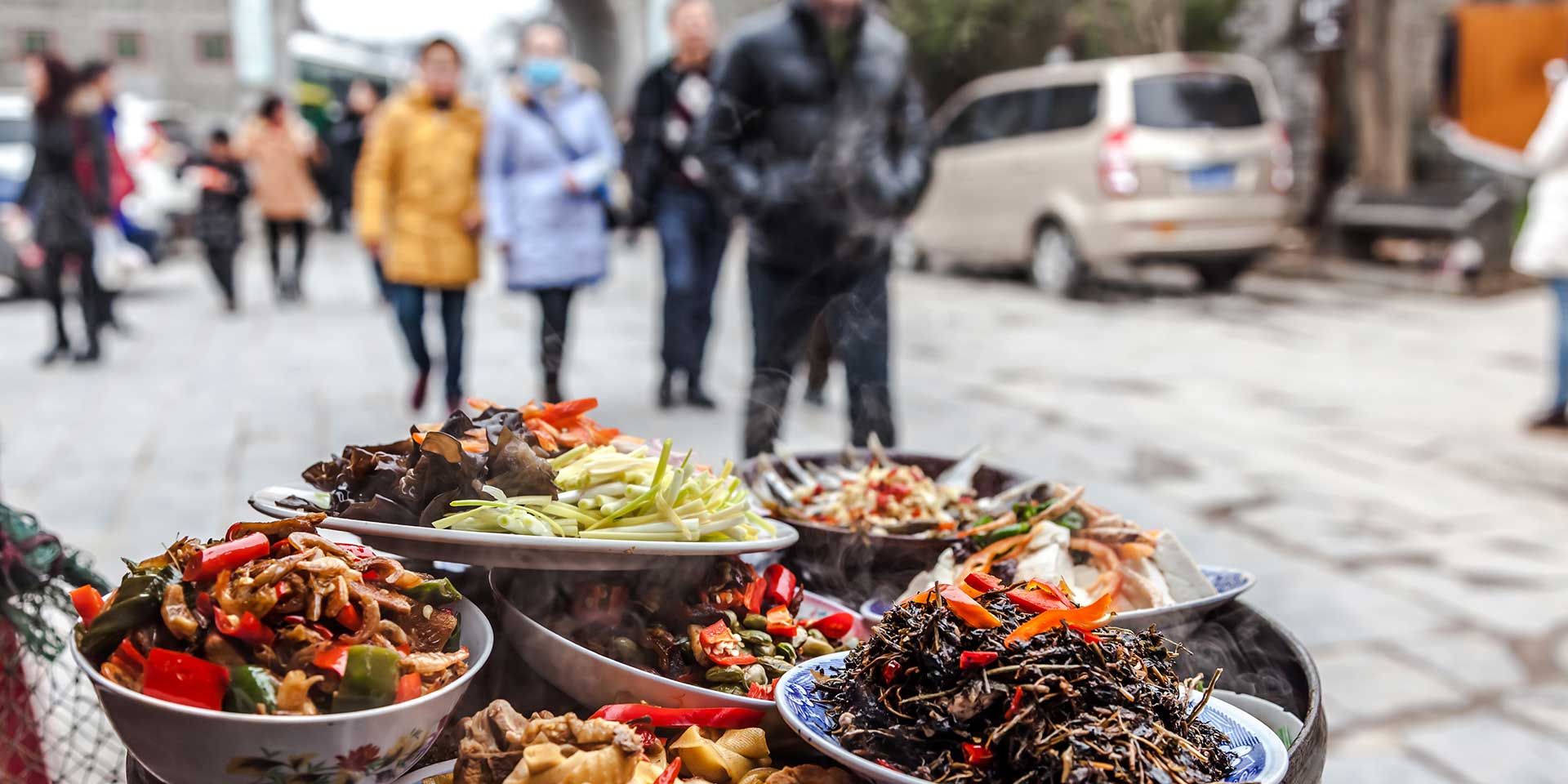




1 thought on “An Essential Guide to Mexican Tortas: Everything You Need to Know”
Pingback: Beginner’s Guide to What a Torta Is - The Dining Destination
Comments are closed.